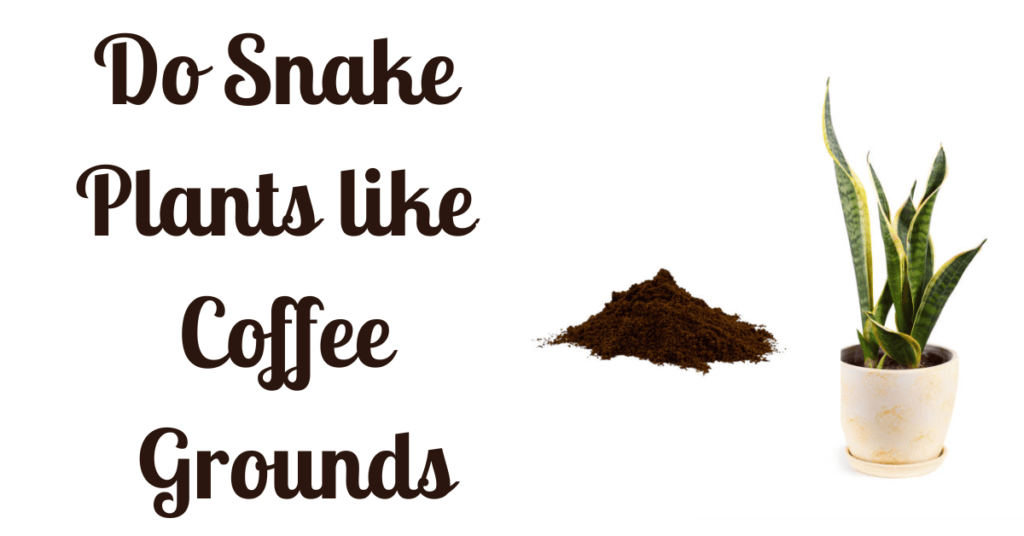When brewing coffee in a French press, the question often arises: using regular ground coffee in a French press. The answer is a resounding yes! The French press, known for its simplicity and ability to extract rich flavors, easily accommodates regular ground coffee.
The French press is forgiving and versatile, unlike certain brewing methods requiring specific grind sizes. Whether you prefer a medium grind or a coarser one, your regular ground coffee can deliver a satisfying and robust cup when prepared in a French press.
This brewing method allows coffee enthusiasts to enjoy their favorite blends’ full-bodied taste and aroma, making it an accessible and convenient choice for those who appreciate a straightforward yet flavorful coffee experience.
So, next time you reach for your French press, feel confident using your regular ground coffee for a delightful and personalized brew.
Table of Contents
Can You Use Regular Ground Coffee in a French Press: Understanding Coffee Grounds in French Press

Absolutely, you can use regular ground coffee in a French press. The beauty of a French press lies in its adaptability to various grind sizes.
The French press method can extract robust flavors, providing a versatile brewing experience, whether your coffee is finely ground or coarsely textured.
This flexibility makes it convenient for coffee enthusiasts to enjoy their preferred blends without needing specialized grinds.
So, if you’re ever wondering, “Can you use regular ground coffee in a French press?” rest assured that the answer is yes, allowing you to effortlessly achieve a satisfying and flavorful cup of coffee tailored to your taste preferences.
What is a French Press?

A French press, a press pot, a plunger pot, or simply a coffee press is a manual coffee brewing device that offers a straightforward and effective way to make coffee.
It comprises a cylindrical glass or stainless steel container with a plunger and a metal or nylon mesh filter. The process involves steeping coarsely ground coffee beans in hot water and then using the plunger to separate the grounds from the brewed coffee.
To brew coffee using a French press, coarsely ground coffee is added to the bottom of the container, followed by hot water. After allowing the coffee to steep for a few minutes, the plunger is pressed down, separating the grounds from the liquid.
The result is a full-bodied and flavorful cup of coffee, often praised for its rich taste and aromatic qualities.
The French press is appreciated for its simplicity, as it doesn’t require electricity or complex machinery. It allows users more control over the brewing process, making it a popular choice for coffee enthusiasts who appreciate a hands-on approach to coffee preparation.
How to Use Fine Grind in a French Press?

When it comes to brewing coffee with a French press, many enthusiasts wonder about the compatibility of fine grind.
Contrary to the conventional wisdom that recommends a coarser grind, using a fine grind in a French press can yield a cup of coffee with unique characteristics.
Here’s a detailed guide on navigating the process and extracting rich flavors from finely ground coffee beans.
Choosing the Right Coffee:
Begin by selecting high-quality coffee beans suitable for a French press.
Opt for a fresh and aromatic blend, as the fine grind allows for a more pronounced extraction of flavors.
Ensure that your coffee beans are recently roasted for the best results.
Adjusting Coffee-to-Water Ratio:
It’s crucial to adjust the coffee-to-water ratio to compensate for the finer grind.
A standard recommendation is to use one to two tablespoons of acceptable coffee grounds for every six ounces of water.
Acceptable grounds have a larger surface area, requiring more precision in measurement to achieve the desired strength.
Brewing Time Considerations:
Since finer grounds expose more surface area to water, the French press brewing time should be shorter than coarser grinds.
Aim for a steeping time of about 3 to 4 minutes to prevent over-extraction, which can lead to bitterness.
Managing Sediment:
One concern with using fine grind in a French press is the potential for excess sediment in the cup.
To address this, consider using a quality burr grinder for a more uniform grind, reducing the presence of fine particles.
Additionally, allowing the coffee to settle briefly before plunging can help minimize sediment.
Pressing and Pouring:
Following the steeping process, gently and gradually push the plunger downward.
Don’t apply excessive force, as finer grounds may create more resistance.
Once pressed, pour the coffee immediately to prevent further extraction.
During pouring, a fine-mesh sieve or a secondary filter can further refine the brew and reduce sediment.
The Best Grind Size for French Press

A coarse grind is recommended to achieve the best French press results. The French press, a press pot or plunger pot, relies on a larger grind to achieve the best results. The coarse grind allows for a slower extraction process, enabling the water to permeate the coffee grounds thoroughly.
This, in turn, facilitates the extraction of robust flavors and minimizes over-extraction, which can lead to bitterness. The recommended consistency for French press grind is similar to breadcrumbs or coarse sea salt.
Using a burr grinder is highly recommended for achieving a consistent and uniform coarse grind. The even particle size ensures that all coffee grounds are equally exposed to water during brewing, contributing to a balanced and flavorful cup of coffee.
Experimenting with the grind size and finding the right balance between coarseness and extraction time allows coffee enthusiasts to tailor their French press brewing to their taste preferences.
Straining Fine Coffee Grounds from Your French Press
Filtering acceptable grounds out of your French press can be a crucial step to enhance your coffee-drinking experience.
While French presses are traditionally used with coarser grounds, you may encounter some fine particles that affect the smoothness of your brew.
Here’s a guide on how to effectively filter out those acceptable grounds:
Use a Quality Burr Grinder:
Investing in a good burr grinder is the first line of defense against acceptable grounds.
Burr grinders provide a more uniform grind, reducing the presence of smaller particles that can slip through the filter.
Choose a grinder with settings that allow you to achieve a consistent coarse grind.
Allow Grounds to Settle:
After steeping your coffee in the French press, let the grounds settle at the bottom before plunging.
This can take about 30 seconds to a minute.
Allowing the grounds to settle allows the finer particles to sink, making separating them from the liquid easier.
Plunge Slowly and Steadily:
When pressing the plunger down, do so slowly and steadily.
This gentle approach minimizes the chances of forcing fine ground through the mesh filter.
Applying excessive force can lead to the escape of smaller particles into your coffee.
Use a Secondary Filter:
Consider using a secondary filter during pouring.
Pour your coffee through a fine-mesh sieve, a reusable metal filter, or a paper filter.
This extra step can catch any remaining fine ground and provide a smoother cup.
Experiment with Brewing Time:
Acceptable grounds can result from over-extraction during a prolonged brewing time.
Experiment with shorter steeping times to find the sweet spot that extracts the desired flavors without generating excess fine particles.
Choose a Quality French Press:
Opt for a French press with a well-designed and tight-fitting filter. Cheaper models may have less effective filters that allow more fine ground to pass through. Investing in a higher-quality French press can make a noticeable difference in filtration.
Combining these methods can significantly reduce the presence of acceptable grounds in your French press coffee, resulting in a smoother and more enjoyable cup. Adjusting your brewing technique and utilizing additional filters can help you balance a rich flavor profile and a clean cup.
Perfect French Press Coffee Ratio for Making Coffee

The perfect French press coffee ratio is crucial for achieving a well-balanced and flavorful brew. A commonly recommended ratio is 1:15, which means one part coffee to 15 parts water. However, personal preferences can influence this ratio. Here’s a step-by-step guide to help you find the perfect balance for your taste:
- Coffee Beans:
Start with high-quality coffee beans and ensure they are coarsely ground. The coarser grind is ideal for French press brewing. - Coffee-to-Water Ratio:
Use a scale to measure your coffee and water precisely. A general guideline is to use 1 to 2 tablespoons of coarsely ground coffee for every 6 ounces (177 milliliters) of water. This translates to approximately 1:15 to 1:17 coffee-to-water ratio. - Experiment with Ratios:
Experimentation is vital to finding your perfect ratio. If you prefer a more robust cup, lean towards the 1:15 ratio. For a milder taste, you might opt for the 1:17 ratio. Adjusting the ratio allows you to customize the strength of your coffee to suit your palate. - Consistency:
Consistency in measuring is essential for reproducible results. Once you find a ratio that suits your taste, stick to it to consistently enjoy your preferred cup of French press coffee. - Water Temperature:
Use water just below boiling, around 200°F (93°C). Pouring hot water over the coffee grounds helps extract the flavors effectively. - Brewing Time:
Adjust the steeping time based on your taste preferences; a longer one can produce a more potent brew.
Remember, these guidelines are a starting point, and the “perfect” ratio is subjective. Feel free to tweak the ratios to match your taste preferences. Don’t hesitate to experiment with different coffee bean varieties and grind sizes to find the combination that suits you best.
How much Coffee do you put in a French Press for 2 Cups?

For a French press brewing two cups of coffee, you’ll want to use a coffee-to-water ratio that suits your taste preferences.
A typical starting point is to use approximately 2 tablespoons of coarsely ground coffee for every 6 ounces (177 milliliters) of water. Therefore, for two cups (12 ounces or 355 milliliters), you would use around 4 tablespoons of coarsely ground coffee.
Remember that this is a general guideline, and you may need to adjust the ratio based on your desired strength. If you prefer a more robust cup, you can increase the amount of coffee slightly, or if you like it milder, you can use a bit less.
Factors such as the grind size, coffee bean type, and personal taste preferences can also influence the final result. Experimentation with these variables will help you find the perfect balance for your ideal cup of French press coffee.
Why A Coarse Grind Is Usually Used?
Using a coarse grind in a French press is the conventional choice, and there are several reasons behind this practice:
Filtration:
French presses typically employ a metal or nylon mesh filter.
Coarse grounds allow for better filtration, preventing smaller particles from passing through the mesh.
This results in a cleaner cup of coffee without the fine sediment that can be present when using finer grinds.
Brewing Time:
Coarser grounds necessitate a longer brewing time in a French press.
The extended steeping period allows for a more thorough extraction of flavors from the coffee beans without over-extracting, which can lead to bitterness.
This slow extraction contributes to French press coffee’s characteristic full-bodied and robust flavor.
Plunger Resistance:
The design of the French press plunger is better suited to coarse grounds.
Finer grinds can create more resistance, making it harder to press the plunger down smoothly.
Coarse grounds facilitate a smoother plunging process, ensuring the grounds remain separated from the brewed coffee.
Flavor Extraction:
The coarser grind size provides an ideal surface area for water to interact with the coffee grounds.
This interaction allows for the extraction of flavors without over-extracting compounds that can result in an undesirable taste.
The coarse grind allows for a balanced and nuanced extraction of the coffee’s flavor profile.
Consistency:
Coarse grinds offer a more consistent extraction in a French press. The uniform particle size ensures that each coffee ground is exposed to water equally, promoting a balanced and well-rounded cup of coffee.
While coarse grinds are traditionally recommended for French press brewing, using a fine grind is not entirely taboo. Some coffee enthusiasts experiment with fine grinds, adjusting variables like brewing time and filtration methods. This experimentation can yield a unique cup of coffee with different flavor profiles. However, it may require more careful attention to prevent over-extraction and sediment in the final brew.
Purchase the Perfect Coffee Beans

Embarking on the journey to purchase the perfect coffee beans involves several key considerations to ensure a tailored and enjoyable coffee experience. First and foremost, understanding your flavor preferences is essential. Coffee beans offer diverse tastes, from fruity and floral to nutty or chocolatey. Identifying your preferred flavor profile will guide your selection.
Additionally, different coffee origins produce beans with distinct characteristics. Ethiopian beans may offer fruity and floral notes, while Brazilian beans often present a nuttier, chocolatey profile. Exploring beans from various origins allows you to discover your preferred flavor palette.
Roast level plays a significant role in flavor development. Light roasts retain more natural characteristics, while dark roasts boast bolder, smokier flavors. Experimenting with different roast levels can lead to finding your ideal cup.
Opting for whole beans instead of pre-ground coffee ensures freshness and enhances the overall flavor. Checking the roasting date on the packaging is crucial; aim for beans roasted within the past two weeks for peak freshness.
Purchasing from reputable coffee roasters or specialty shops is advisable. They often offer high-quality beans, share detailed origin information, and may provide various options to suit diverse tastes. Sustainability and ethical sourcing, such as Fair Trade or Rainforest Alliance certifications, contribute to responsible coffee consumption.
Exploring different coffee varieties is part of the journey. Arabica beans are known for nuanced flavors, while Robusta beans offer a more pungent taste. The variety is yours to explore, whether you choose a blend or a single-origin bean.
Reading reviews and seeking recommendations from fellow coffee enthusiasts can be invaluable. Learning from others’ experiences guides you toward reputable brands and specific bean varieties that align with your preferences.
Finally, staying open to exploration is critical. The perfect cup of coffee may result from ongoing experimentation and discovery. Trying beans from different regions, roasters, and even popular brands can lead to surprising and delightful finds.
For a specific recommendation, consider trying the best Colombian coffee beans for a delightful medium roast. Explore the richness of Brazilian beans known for their unique flavors. Additionally, experimenting with well-regarded Starbucks beans can provide a familiar yet satisfying option for your coffee repertoire. Each line offers a unique experience, expanding your palate and adding diversity to your coffee selection.
Can You Use Regular Ground Coffee in a French Press: FAQS
Do you need Exceptional Coffee for the French Press?
Opt for freshly ground coffee with a coarse grind for your French press, ensuring consistency for a consistently balanced and delicious cup. Using your own beans guarantees the ideal result compared to pre-ground options.
What type of Coffee is best for the French Press?
Optimal for French press, our top roast picks include medium to dark roasted beans, with their coarse grind allowing rich extraction of oils for a decadent brew.
Do you use Hot or Cold Coffee in a French Press?
For ideal French Press coffee, heat water to around 195°F, slightly below boiling. Let it rest for a minute off the heat before brewing, or use a thermometer to ensure the perfect temperature.
Is French Press Coffee Stronger than Espresso?
Espresso is stronger than French press coffee due to its concentrated brewing process, with shorter contact time between coffee and water, resulting in a bolder taste.
Bottom Line
Concluding the article can you use regular ground coffee in a French press, the versatility of a French press extends to accommodating regular ground coffee effortlessly.
The simplicity of this brewing method allows coffee enthusiasts to savor the full flavors of their preferred blends, making it a convenient and accessible choice.
Elevate your morning ritual with the ease and adaptability of the French press, showcasing the delightful potential of your everyday coffee grounds.







